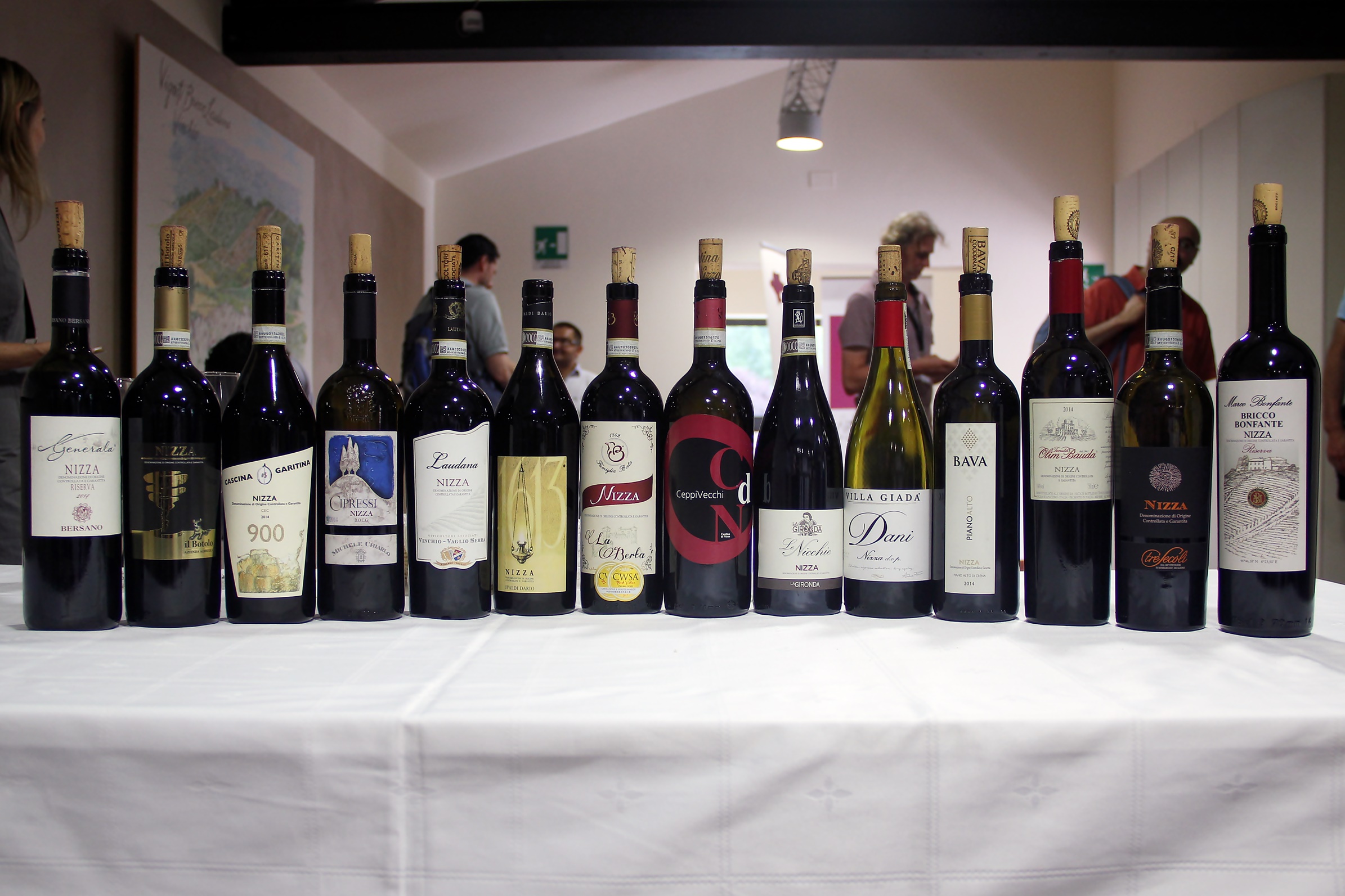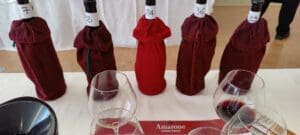
The name sounds like Pizza, but Nizza is more than that. For two years since the appellation of Nizza DOCG (Denomination of Controlled Origin with Guarantee) was known to the world, very little is known and seen in Singapore market. From my observation, there is little interest in Singapore when it comes to a Barbera wine. Why would anyone care? Why should they? Meeting the Nizza DOCG consortium in July gave me a glimpse of what they have in mind, and it seems targeted at people like us.
In brief, the wine of Nizza DOCG is made only with Barbera grapes harvested from vineyard grown on hillsides. The vineyards must have an orientation that span from south-east to south-west, which is an unusual requirement. This effectively limits every conical hill to only three out of eight faces qualified for Nizza DOCG. Furthermore, the vineyard must have a 4,000 plants per hectares density which make the vines grow in a highly competitive environment.
Just Nizza, no Asti
Before Nizza DOCG became material, there is already a Barbera d’Asti DOCG which approved Nizza, Tinella and Colli Astiani as subzones for the Superiore (0.5% higher alcohol) style. In this all-encompassing Barbera d’Asti DOCG appellation, the wine requires 90 percent Barbera grapes. Experts agree that this appellation is making high-quality Barbera wines, but still, the branding of Barbera d’Asti pales in comparison with the Barbera from Alba.
One possible explanation by Dheeraj who came from Australia is Barbera d’Alba is better branded with the help of Alba, a town more known for its Nebbiolo wines and white truffles. This also supports my opinion that Asti is strongly linked with Moscato d’Asti, a wine more known for being cheap and cheerful. This hypothesis can be supported by the fact that there is actually an Asti DOCG that only permits Moscato Bianco and a Alba DOC that blends Nebbiolo and Barbera. This stark difference in branding association could be one reason Barbera from Asti is seen lesser to Barbera from Alba.
Barbera pure play
Some of the greatest wines in Italy had long adopted the pure play strategy of using single grape variety. By removing all other variables, a wine made from one grape variety can better illustrate the uniqueness of its place, and provide clarity on what the grape variety is. And such is the success of Barolo, Barbaresco and Brunello. Nizza might just be another star in the great Parthenon of Italian wines.
Confusion may generate interest
However, like all new policies, a new labelling scheme will naturally introduce new confusion from retailers to consumers. Like the case for Chianti Classico Gran Selezione, it was an added burden for people to understand Chianti which was already complex with the varying levels of requirements, riservas, subzones and classic region. At the end of the day, Chianti is still a wine that permits blending that result in various quality levels and heterogeneous products, instead of being homogenous like what an appellation is.
Nizza is different by breaking away with the past, painting an identity that is easy to recognize, focusing on single variety, and a pronounceable name. The shorter name without reference to province and grape will generate interest among curious drinkers and hopefully elevate the status of Barbera grapes in foreign markets.



